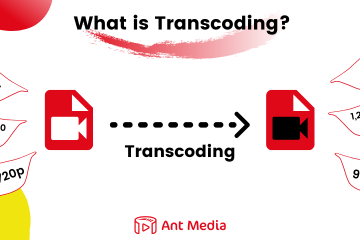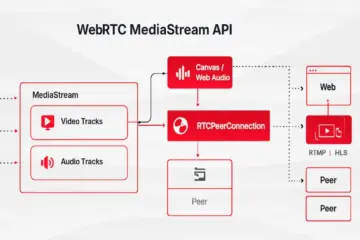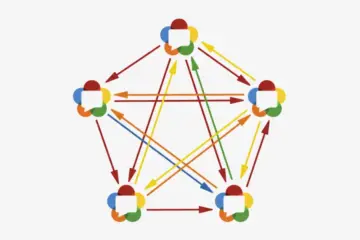Step into the future of digital experience with the company turning video from something you watch into a world you can explore.
Traditional 2D
Interactive 3D Capture
For decades, video has been our window into other worlds. We’ve sat in our seats, watching stories and events unfold on flat, rectangular screens. The director called all the shots—deciding exactly what we see and how we see it.
But what if you could actually step through that window? What if you could lean left to peek around a corner, zoom in to check out a product’s finish, or stand right there on the pitch during the game-winning goal?
This isn’t some far-off sci-fi dream anymore. It’s happening right now, and SpacePort is leading the charge—creating groundbreaking 3D video content that’s changing how we experience digital media.
Table of Contents
Why 2D Just Doesn’t Cut It Anymore
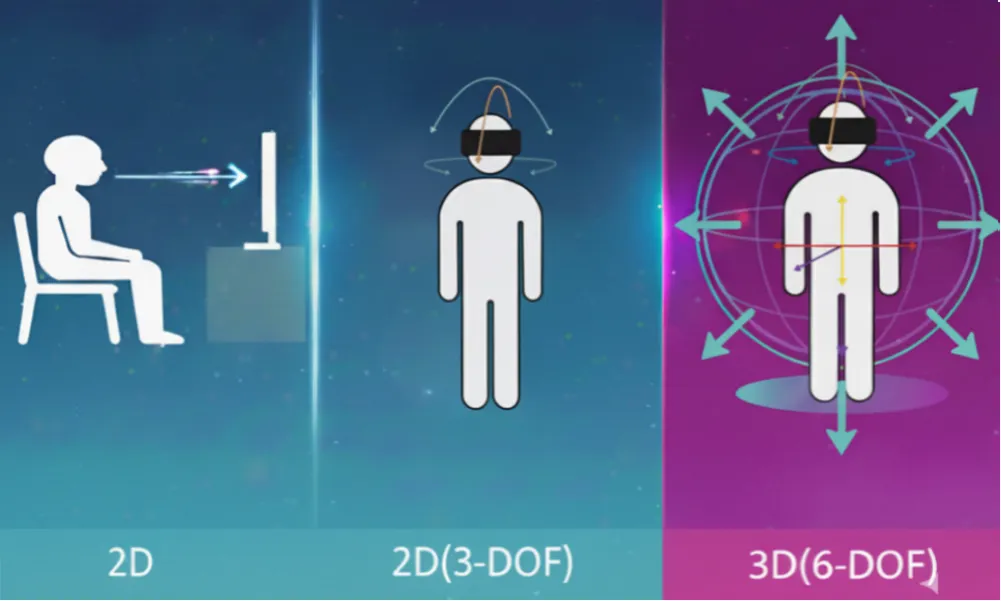
Look, traditional 2D video has given us some incredible moments—unforgettable stories, breaking news, entertainment that’s shaped our culture. But here’s the thing: you’re always just watching. You’re stuck in your seat with one perspective, and that’s it. The frame is basically a cage for your viewpoint.
Then came 360-degree video with 3 DOF (three degrees of freedom). This was a big step forward. Now you could look around—up, down, left, right—giving you the freedom to rotate your view. It’s like standing in the middle of a painted sphere where you can turn your head to see what’s happening around you. Pretty cool, right?
But there’s a catch: you’re still stuck in place. You can look around all you want, but you can’t actually move. You can’t lean in to see something up close or step aside to check out a different angle. You’re rooted to one spot.
That’s where SpacePort comes in and completely changes the game with Interactive 3D Video powered by 6 DOF (six degrees of freedom). This isn’t the gimmicky 3D you remember from movie theaters with those clunky glasses. This is a fully volumetric, truly immersive environment.
With 6 DOF, you get total freedom. You can rotate your view (just like 3 DOF), but you can also physically move through the space—walk forward, step back, move side to side, even up and down if the scene allows it.
Think about it this way: it’s the difference between looking at a photo of a sculpture in a museum, standing in front of it with 360 video, and actually being there in person—walking around it, leaning in to see the texture, stepping back to take in the whole piece. That’s what SpacePort creates. And that shift from passive viewer to active explorer? That’s what makes content truly unforgettable.
What Makes SpacePort Different
So what sets SpacePort apart from everyone else trying to do 3D video? It comes down to their core technology and philosophy. They’re not just following trends—they’re setting them, particularly with their use of cutting-edge Gaussian Splatting.
1. Unmatched Realism with Gaussian Splatting:
While other companies are still using older methods, SpacePort has gone all-in on Gaussian Splatting. So what exactly is it? Instead of building rigid 3D meshes (which can look artificial), Gaussian Splatting captures a scene as millions of intelligent, fuzzy points called “Gaussians.”
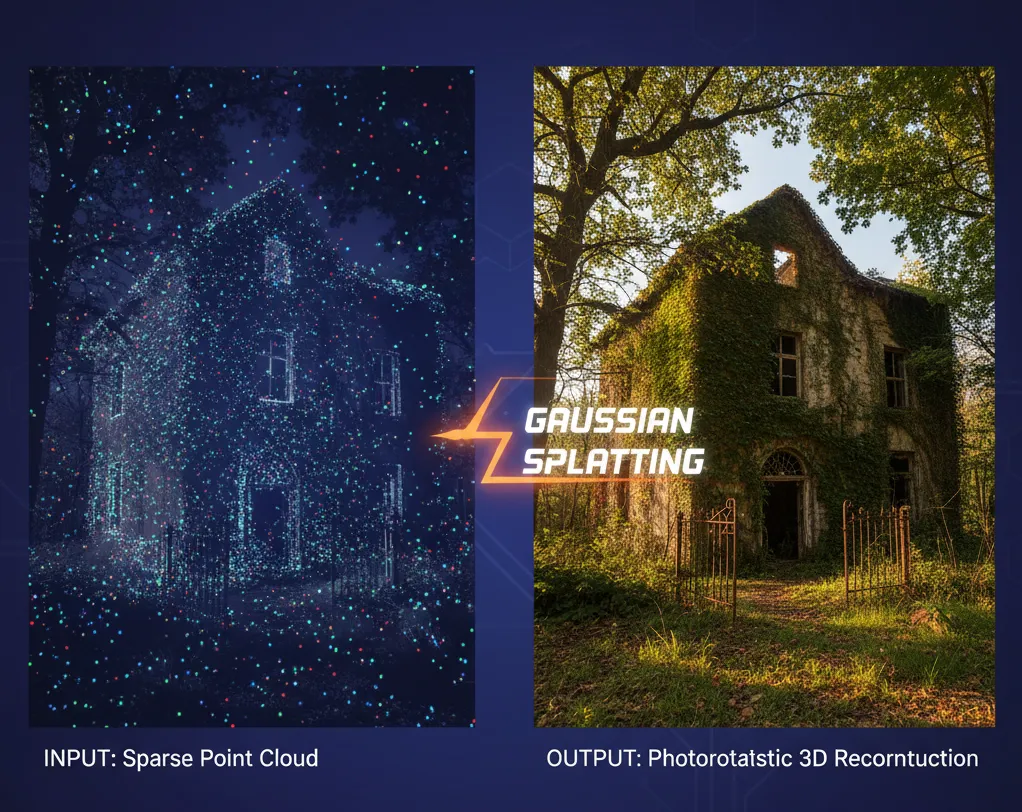
Each point knows its color, how transparent it should be, and how to blend with its neighbors. When you view it, these points “splat” onto your screen, creating images that are incredibly photorealistic and smooth. The result? You get super detailed, fluid 3D scenes you can explore from literally any angle. The immersion feels completely seamless.
2. It Just Feels Natural:
Here’s where the magic really happens: the user experience. Thanks to how efficient Gaussian Splatting is, moving your viewpoint around feels as natural as turning your head in real life. There’s no lag, no awkwardness—the technology just gets out of your way and lets you explore. That’s what makes it accessible to everyone, not just tech enthusiasts.
3. Built for What’s Next:
SpacePort isn’t just making cool videos for today. They’re building content that’ll still be relevant and valuable years from now. Their 3D assets work perfectly with emerging platforms—whether it’s the latest AR/VR headsets or whatever the metaverse evolves into. It’s future-proof technology.
Real-World Impact: Where SpacePort is Making Waves
Okay, enough theory. Let’s talk about how SpacePort’s technology is actually changing things in the real world—and creating serious business opportunities.
E-commerce & Retail: Giving Shoppers What They Actually Want
Traditional product videos force you to watch from one angle—whatever the director chose. SpacePort flips that on its head with interactive 3D video demonstrations. Picture this: a chef demonstrating a new set of cookware at a kitchen island. With SpacePort’s tech, you can move around to see the cooking from any angle—look down into the pan, check out the chef’s technique, or zoom in on specific ingredients. All in the same video.
Or imagine watching a jewelry showcase where you can navigate around the display to examine the piece from every side while the presenter explains its features. Same with tech product launches—you choose your viewpoint. Front row? Behind the product? Zooming in on details? It’s all up to you.
The business impact is real: longer engagement times, higher conversion rates, and fewer returns. When customers can actually explore a product, they buy with confidence. That’s measurable ROI for retailers.
Sports & Entertainment: Finally, Fans Get to Choose

Tired of missing the action because the broadcaster chose the wrong camera angle? Yeah, us too. With SpacePort’s volumetric video technology, fans can watch live or recorded events from wherever they want—the sideline, behind the goal, courtside, even from the coach’s perspective.
This isn’t just cool for fans (though it definitely is). It’s a goldmine for leagues and teams. Think premium viewing packages, exclusive angle subscriptions, interactive replays that people will pay for again and again. It’s a whole new way to monetize content that was previously a one-and-done experience.
Education & Training: Learning by Doing (Sort Of)
Reading about something in a textbook is one thing. Watching it happen from any angle you want? That’s a totally different level of learning. SpacePort lets institutions create interactive 3D video demonstrations where students can actually navigate around the action.
Imagine medical students watching a surgery and being able to move around the operating table to see from different perspectives. Or chemistry students navigating around a lab bench to watch a reaction from every angle. Athletic training where you can examine a coach’s technique from any viewpoint.
These aren’t just fancy teaching tools—they’re premium content that can be licensed and sold. Medical schools pay serious money for quality training materials. Industrial companies need safety training that actually works. This is where SpacePort’s tech creates real business value for educational institutions and training providers.
Live Events & Performances: Making Every Moment Count (And Count Again)
Here’s the thing about concerts, theater shows, corporate keynotes, and award ceremonies: they happen once, and then they’re gone. Or at least they used to be. With SpacePort’s volumetric video technology, you can capture these events in a way that lets viewers choose their own experience.
Want to watch that concert from the front row? Done. Prefer to be stage-side? No problem. Watching a theater performance and wish you could see it from different seats—or even from on-stage? Now you can. Corporate events can offer premium replay experiences where attendees can revisit keynotes from angles they didn’t get to see live.
The revenue potential here is huge: exclusive viewing packages for live events, archival content that people will pay to access years later, premium replay subscriptions that extend the life of one-time events way beyond opening night. You’re not just selling tickets anymore—you’re selling experiences that can be enjoyed over and over.
The Future is Here, and It’s Interactive
We’re at one of those rare moments in technology history where everything changes. The shift from 2D to interactive 3D video is as big as when we went from radio to television. No, seriously—it’s that significant.
And SpacePort isn’t just riding this wave—they’re the ones creating it. By pioneering advanced techniques like Gaussian Splatting, they’re building the bridges that’ll carry us into our immersive digital future. They’re not just making videos anymore; they’re crafting actual digital realities that you can step into and explore.
That old metaphor of video as a window? It’s outdated. The window isn’t just a view anymore. It’s a door. And SpacePort is the one holding it open for all of us.
Frequently Asked Questions (FAQs)
What is 6 DOF (Six Degrees of Freedom) and why is it important?
6 DOF refers to the ability to move freely in a 3D space: forward/backward, up/down, left/right (translation), and to rotate around three axes (pitch, yaw, roll). This is crucial for true immersion in interactive 3D content, as it allows users to physically navigate and explore a scene, rather than just looking around from a fixed point. SpacePort’s technology enables this full freedom of movement.
How does SpacePort’s Gaussian Splatting differ from traditional 3D modeling?
Traditional 3D modeling often relies on creating polygonal meshes, which can sometimes appear less natural or require significant manual effort to achieve photorealism. Gaussian Splatting, on the other hand, captures scenes as millions of individual “Gaussians” (fuzzy points) that inherently carry color, transparency, and blending information. This results in incredibly lifelike, fluid, and highly detailed 3D environments that render seamlessly from any viewpoint, offering a more organic and realistic visual experience.
What kind of content can be transformed into interactive 3D video?
Almost any real-world scene or event can be captured and transformed. This includes product demonstrations, live sports events, concerts, theatrical performances, educational lectures, training simulations, real estate tours, and more. If it can be filmed, SpacePort can likely turn it into an interactive 3D experience, opening up new possibilities for engagement across various industries.
Is SpacePort’s technology compatible with existing VR/AR hardware?
SpacePort’s interactive 3D content is primarily designed for broad accessibility across modern web browsers on desktops and mobile devices. While development for full compatibility with dedicated VR/AR headsets is actively in progress, our current focus ensures a rich, immersive experience through widely available platforms. We are continuously working to expand our reach to all immersive hardware.
What are the benefits for businesses adopting SpacePort’s 3D video?
Businesses can expect several significant benefits, including dramatically increased user engagement, higher conversion rates (especially in e-commerce due to enhanced product exploration), reduced product returns, and the creation of new, premium revenue streams through unique interactive content offerings. It also provides a future-proof content strategy that aligns with the evolving landscape of immersive digital experiences.
How long does it take to produce interactive 3D video content?
Production timelines vary based on the complexity and scale of the project, including the size of the scene, duration of the content, and specific client requirements. SpacePort works closely with clients through a structured process—from initial consultation and capture planning to post-production and integration—to ensure efficient delivery. A detailed project scope will provide a more accurate timeline estimate.
Can SpacePort’s technology be used for live streaming interactive 3D events?
SpacePort is actively developing and refining capabilities for live interactive 3D streaming. While current applications often focus on pre-recorded or near-live experiences, the underlying technology is designed to support real-time volumetric capture and delivery. This opens up exciting possibilities for truly immersive live events where viewers can choose their perspective as the action unfolds.
Ready to Transform Your Content?
Don’t just tell your story—let people step inside it. SpacePort’s volumetric video technology is changing how the world experiences content.
- See What’s Possible: Explore our portfolio of immersive 3D experiences
- Watch the Magic Happen: View our technology demo reel and case studies
- Let’s Create Something Amazing: Get in touch to discuss your project
- Learn More About the Tech: Visit SpacePort.tv to discover how we do it
Whether you’re in sports, entertainment, education, or e-commerce—if you have a story worth telling, we can help you tell it in a way that’s never been done before.
Follow SpacePort and stay ahead of the immersive content revolution:


